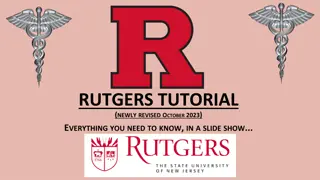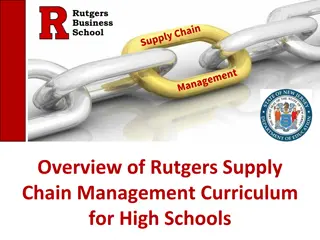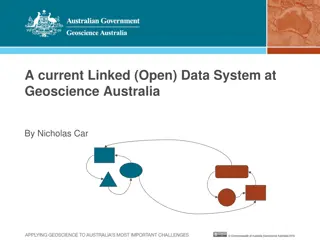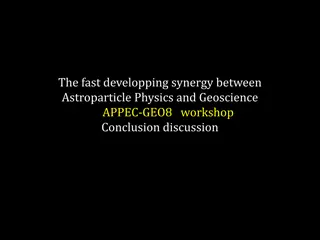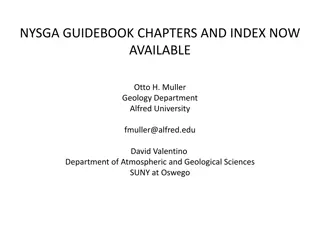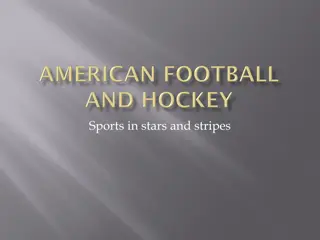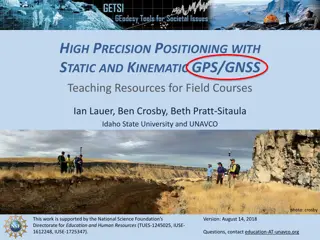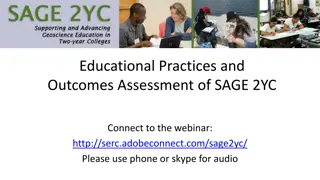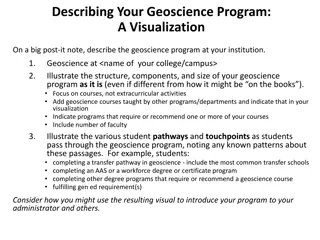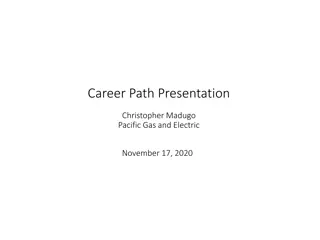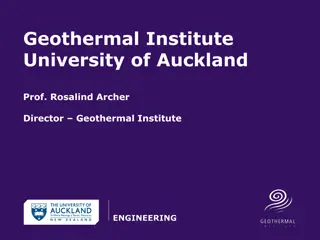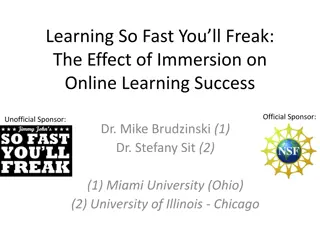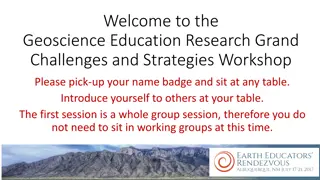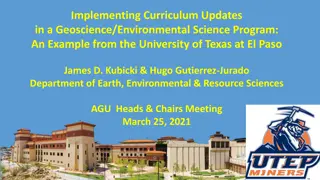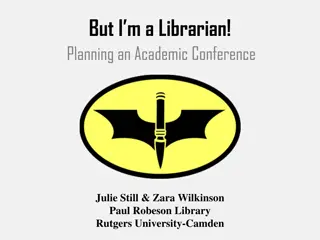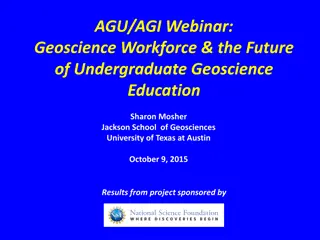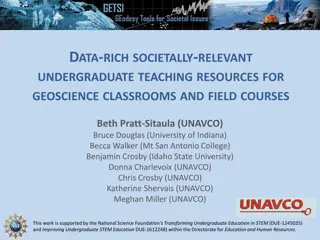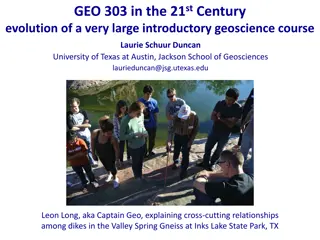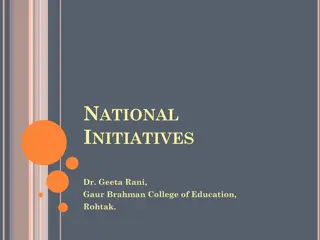Evolution of Geoscience Education at Rutgers University
The Rutgers Geology Museum played a significant role in the development of geoscience education in the 19th and 20th centuries at Rutgers University. From the rise of geology in the United States to the establishment of geology courses at the university, key figures like George H. Cook and A.H. Chester contributed to the growth of the museum and its collections. The early years saw the hiring of curators who expanded the museum's specimen collections. The focus on teaching and maintaining exhibits in the museum underscores its importance in geology education.
Download Presentation

Please find below an Image/Link to download the presentation.
The content on the website is provided AS IS for your information and personal use only. It may not be sold, licensed, or shared on other websites without obtaining consent from the author. Download presentation by click this link. If you encounter any issues during the download, it is possible that the publisher has removed the file from their server.
E N D
Presentation Transcript
The Rutgers Geology Museum and its Role in the Evolution of the 19th and 20th Century Geoscience College Classroom Rutgers University Lauren Neitzke-Adamo- Rutgers Geology Museum A.J. Blandford- Department of History Ericka Gordor- Library Archives Richard Olsson- Department of Earth and Planetary Sciences
The Rise of Geology in the United States 1787- Samuel Latham Mitchill publishes Geological Remarks on the maritime Parts of the State of New York 1792- Mitchill teaches chemistry and natural history at Columbia 1809- William Maclure publishes geologic maps 1816- Parker Cleaveland publishes first geology text book. 1818- Geology articles begin appearing in the American Journal of Science 1830 s- MA, NY, and PA launch their own geological surveys Geologic map published by Maclure and included in Cleaveland s geolgy text book.
Geology at Rutgers University 1829- President was notified that John Finch was ready to teach a Geology course once a space and time were assigned. 1830- Student run Society for Natural History requests funds for a cabinet for the reception and preservation of specimens they collected. Beck Collection 1830- Lewis C. Beck starts teaching Geology and Mineralogy at Rutgers and greatly expands the mineral collections. 1853- George H. Cook appointed to succeed Beck. Became state geologist of NJ in 1864. Lewis C. Beck
George Cook and the Morrill Act 1864- As VP of University Cook lobbied for funds after the passing of the Morrill Act under Lincoln. Faculty committee proposal for an observatory, astronomical apparatus and need for resources for scientific instruction, 1864 (first proposal for museum) Land Grant Status granted in April 1864 Schanck Observatory built in 1866 Geology Hall completed in 1872 First structure devoted to scientific instruction and home to Geology, Physics, and Military Science George H. Cook Schanck Observatory Geology Hall
Early Years and Curators at the Museum 1892- A.H. Chester hired as first museum curator. Increased the museum collection by close to 5,000 specimen Chester Collection 1893- William S. Valiant hired as assistant curator. Responsible for reorganizing and labeling the almost 30,000 specimen in collections.
Geology Courses at the Geology Museum Focus of early faculty was teaching and maintaining the exhibits in the museum.
How did students conduct research? Visual scrutiny of objects
The Department of Geological Sciences 1931- Geology officially becomes a department Albert Hayes responsible for expanding faculty and courses (1928-1945) Focus of Department turned to research under tenure of Dick Olson. Museum still open and faculty involved in exhibits. First Open House in 1968 1977- Department moved to another campus Albert Hayes
Museum as Outreach Center for Community Outreach center for NJ and Rutgers Community K-12 tours offered for first time in the 1970 s Varity of tours, events, and field trips offered to all ages and special interest groups that cover Next Generation Science Standards. Partner with centers and groups within and outside of Rutgers. Provide professional development and training in science teaching for STEM Graduate Students. Field Station Dinosaurs
Conclusions The Rutgers Geology Museum is not the oldest, but is one of the oldest geology museums in the country. Unique that the original collections are still housed in the original space and the structural components are in tact. The acquisition of the collections and the demand for geology courses was entirely student lead (Society for Natural History). Mineral and Fossil collections remained the focal point of the faculty s interest and courses for several decades. Since the 1970 s the museum has remained an outreach center for the University and the NJ community. Create awareness about global issues related to Earth Sciences and expand learning and understanding in the K-20 and older communities.
Thank you! Email: Lauren.adamo@rutgers.edu Web: geologymuseum.rutgers.edu



